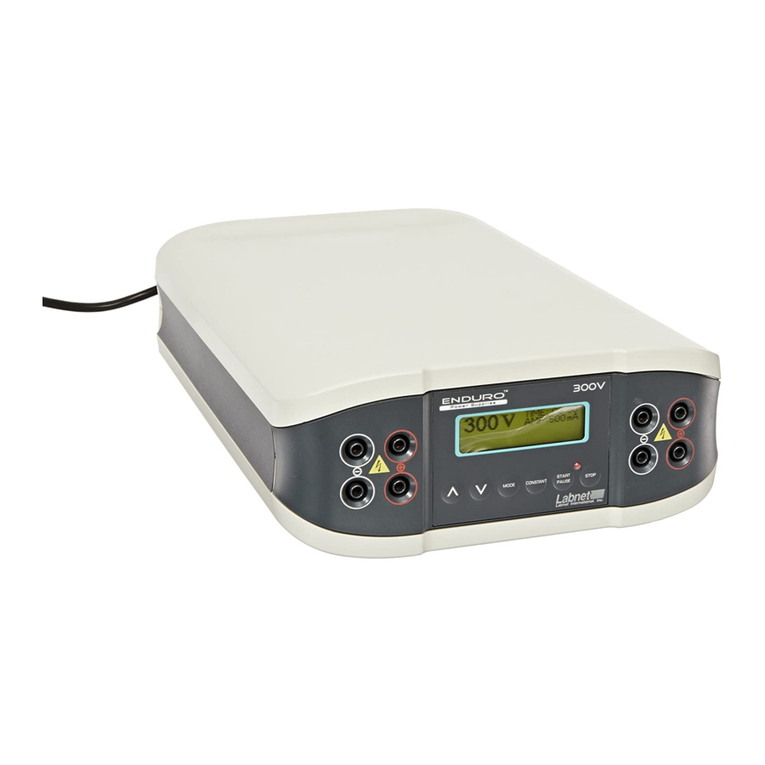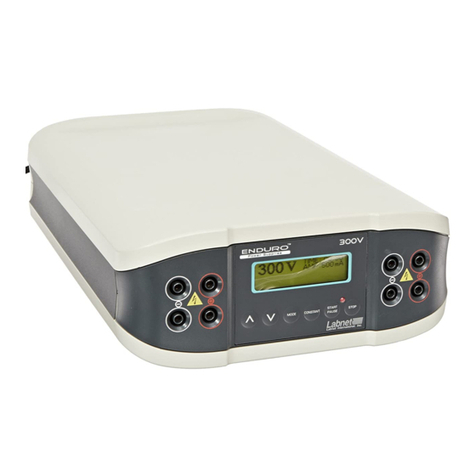
9
Operational Modes
Introduction
The ENDUR 250 Volt Power Supply is designed to operate under different modes, Constant
mode or Programming Mode, depending upon your electrophoresis needs.
Use the Constant Voltage, Constant Power or Constant Current Operation for applications that
require only one specific voltage limit, current limit, and power limit continuously during the
entire duration of electrophoresis.
Start-up
n power up use the ▼▲ arrow key to choose the operational Mode (Constant Mode or
Program Mode) , then press Mode to select..
• n the isplay Screen:
• The controlling value (Volts, Amp or Watts) is displayed on the left-top side of the
display screen.
• The Timer is the first line on the right-top, and the other values (Volts, Amp or Watts)
are displayed in the second and third line on the right side of the display screen.
Constant Operation Protocol
Introduction
Instructions for operating the ENDUR 250 Volt Power Supply in the Constant Operation are
provided in this section. The Constant Voltage, Current, or Power Mode allow you to specify
a voltage limit, current limit and power limit to be used during the entire duration of
electrophoresis. Review the guidelines provided in this manual before starting
electrophoresis using the ENDUR 250 Volt Power Supply.
A basic Constant Voltage, Current Mode, or Constant Power operating procedure of the
ENDUR 250 Volt Power Supply is provided below. We recommend reading the guidelines
provided in this manual for best results before starting an operation.
1. Use the power switch on the rear side of the instrument to turn on the ENDUR 250 Volt
Power Supply. n Display Screen Constant Mode and Program Mode will appear.
2. With the Constant Mode highlighted press the Mode key
3. Use the Mode Key to navigate to needed parameter (Volt. Amp, or Wat)
4. Press the CONSTANT key to select, Constant Voltage Operation, Constant Current
Operation or Constant Power Operation from the isplay Screen.
5. Use the ▼▲ arrow keys to set either voltage (V LT)) or current (AMP) or Power (WAT) to
the appropriate values.
6. Use the Mode key to select TIME and use ▼▲ arrow key to set the time (hours/minutes) to
specify the duration of the electrophoresis.





























